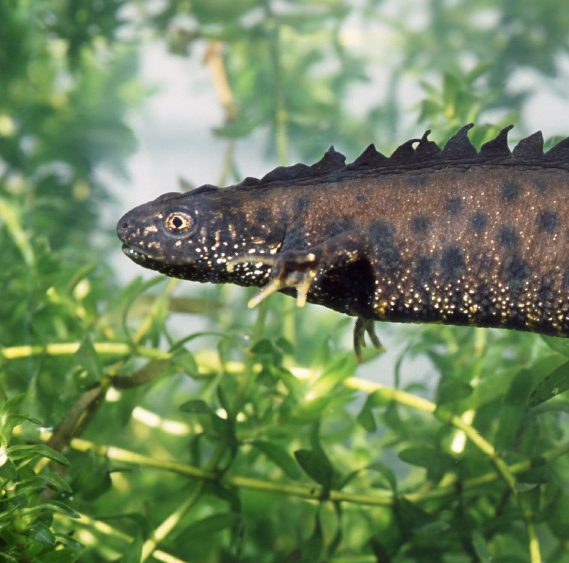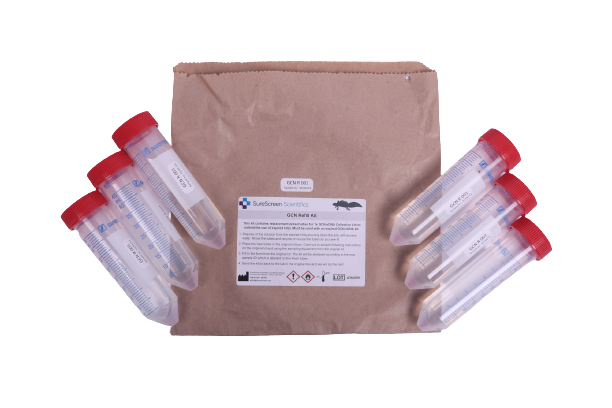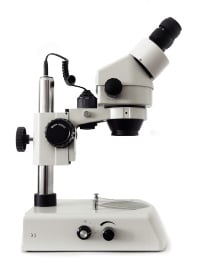eDNA - The Power of a Forensic Ecology Laboratory at Your Fingertips
SureScreen Scientifics specialise in the analysis of ecological samples. We provide a diverse range of laboratory services to the ecological industries, including forensic ecology eDNA-based species detection from environmental samples and molecular species identification and sexing. We also have extensive expertise in eDNA assay design.
Great Crested Newt eDNA
SureScreen Scientifics is one of the UK’s leading great crested newt eDNA service providers.
We’re proud to say we have again scored 100% (10/10) on the latest proficiency test (2024).
eDNA-based surveys of great crested newts are nationally recognized as an approved methodology for ecological impact assessments for the planning and development sector.
For more information on GCN, click here.

Increasing the sustainability of eDNA
Have any out of date GCN eDNA Kits lying around? Don’t throw them away – you can upgrade them by purchasing a GCN eDNA Refill Kit here.
Each year we see around 20% of purchased kits go to waste, i.e. surplus to requirement and not returned to our lab for analysis. We wanted to do something about this so we have created a GCN eDNA Refill Kit to help save 100’s of kgs of waste a year.

Our Services
From crayfish eDNA to bird sexing, find out more about our molecular laboratory services below


Crayfish eDNA
Our crayfish eDNA Analysis service can identify if a single or multiple crayfish species are present or absent within a waterbody such as a pond, stream or river. Our in house developed eDNA test for white-clawed crayfish was the first available in the UK.


Bat dropping ID
Traditional determination of a bat species in a roost is often difficult to achieve and can result in unnecessary disturbances to the bats. Using molecular techniques, we have developed a DNA identification service to identify a bat species from their droppings.


Plant ID
Our plant identification service uses molecular techniques including PCR and DNA sequencing to determine the origin of your plant material down to the species* or genus level. Important for insurance, mortgage providers, environmental agencies as well as ecologists in plant conservation.


Biological Species ID
From faeces bats, mice, otters, pine martens, stoats, all sorts of bird species and even brown bears! Our biological ID service allows for the identification of thousands of species from almost any sample type. We have also worked on a number of wildlife crime and insurance claim cases analysing samples with origin unknown including the identification of cat vs. human urine deposits, fungi spores and black rat faeces.


European Eeel eDNA
Our assay for European eel is now available.


Bees, Wasps & Hornets
We are now able to ID bee, wasp and hornet carcasses, cocoons and other biological material using our biological species ID service. Our Biological Collection Kit is available HERE.


Bird Sexing
Our bird sexing service uses reliable molecular DNA-based sexing methods which are fast, accurate and non-harmful to the bird. DNA based bird sexing is the least invasive method for bird sexing and is becoming much more popular among bird breeders and vets.
Popular eDNA Targets
-
Great crested newt
-
White-clawed crayfish
-
Signal crayfish
-
Common carp
-
Crayfish plague
-
Freshwater pearl mussel
-
European eel
-
Sea lamprey
-
Brown (sea) trout
-
Atlantic salmon
-
Chytrid fungus
-
Brown trout
-
Common frog
-
Chinese mitten crab
-
Smooth newt
-
Quagga mussel
Click here to see our full list of eDNA target species
Bats
Fast and reliable identification of bat species from droppings
eDNA Surveys
Detection of a wide range of aquatic species including smooth newt, freshwater pearl mussels and more...
Crayfish
eDNA species detection for native and non-native crayfish
Plant ID
DNA-based identification of plants from any sample type
How can we help?
Online Shop
Whether you are looking to test an environmental DNA sample for GCN, European eel or chytrid fungus or test a biological sample for species of origin, SureScreen Scientifics offers an array of easy-to-use sample collection kits and tools to get you started with your project.
Visit our online shop to purchase your sample collection kits now by clicking HERE.

Experts in eDNA Assay Design
We have a comprehensive list of species which we can now detect using DNA-based molecular approaches from the identification of bats and other species from biological samples using DNA barcoding approaches, to the detection of crayfish, freshwater pearl mussels and Atlantic salmon from water using qPCR-based eDNA presence/absence surveys.
Can’t see your species listed here? Let our in-house team of molecular biologists help and design an assay for any target species.
We have experience in designing, developing and validating a wide range of assays for species including white-clawed crayfish, marbled crayfish, freshwater pearl mussels and demon shrimp.

About Forensic Ecology
As one of the first providers of great crested newt eDNA analysis, we have grown to employ a diverse range of molecular biologists, consultant forensic scientists, bioinformaticians and ecologists to provide a wide range of services and product development for the ecological industry. We are committed to developing and improving current methods and researching and patenting new technologies. We have supported two PhD students in conjunction with the University of Derby and over the last few years we have launched a number of new eDNA services including bat species identification from faeces and the first commercially available eDNA test for white-clawed crayfish, signal crayfish and the crayfish plague.

 Account
Account





